Abstract
The purposes of the present investigation were to assess the genetic contribution to thevariability between individuals in the rate at which they metabolize phenylbutazone and to characterize the type of inheritance that controls the metabolism of the drug. The 155 persons investigated included 43 unrelated random individual subjects and the members of 28 two-generation family units. None of these subjects had taken drugs in the six months preceding the experiments. Each subject ingested an oral dose of phenylbutazone and the plasma half-life of the drug was determined. These non-pretreated plasma phenylbutazone half-lives suggest the existence of polygenic control, but the value of the data is marred by the frequency distribution being very skewed.
The 142 persons given a second test, included 41 unrelated random subjects and 24 two-generation family units. A three-day course of oral phenobarbitone was followed by an oral dose of phenylbutazone and the plasma half-life of the latter determined. The phenobarbitone was given with the aim of “inducing” drugmetabolizing enzymes in the liver, thus rendering the environment more uniform. When the post-phenobarbitone half-lives were adjusted to a standard height they were approximately normally distributed. There was a significant regression of mean offspring value on mid-parent value, indicating that about 65% of the observed phenotypic variance of post-phenobarbitone plasma phenylbutazone half-lives is due to the additive effects of genes.
Phenylbutazone metabolism in man is thus shown to be under polygenic control, and genetically controlled in a similar manner and to a similar degree to body height.
Improved understanding of phenylbutazone metabolism may lead to improved therapeutic efficacy and a lower incidence of adverse reactions.
Full text
PDF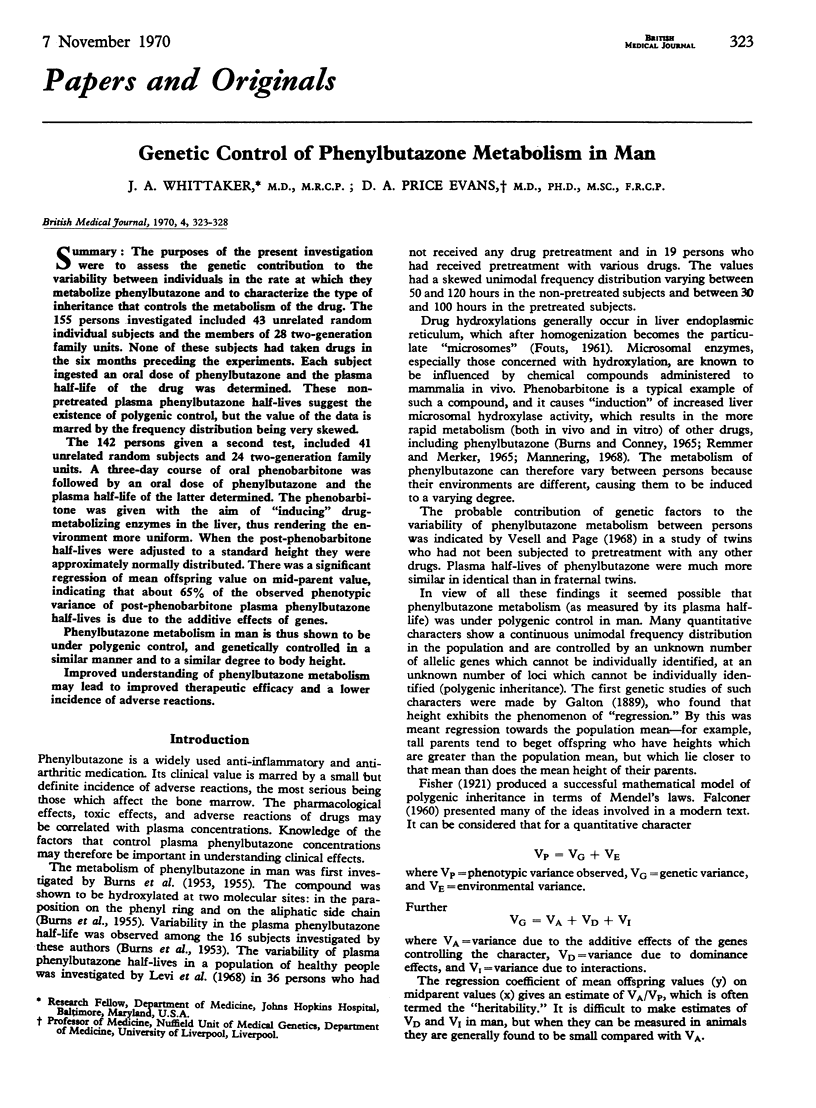
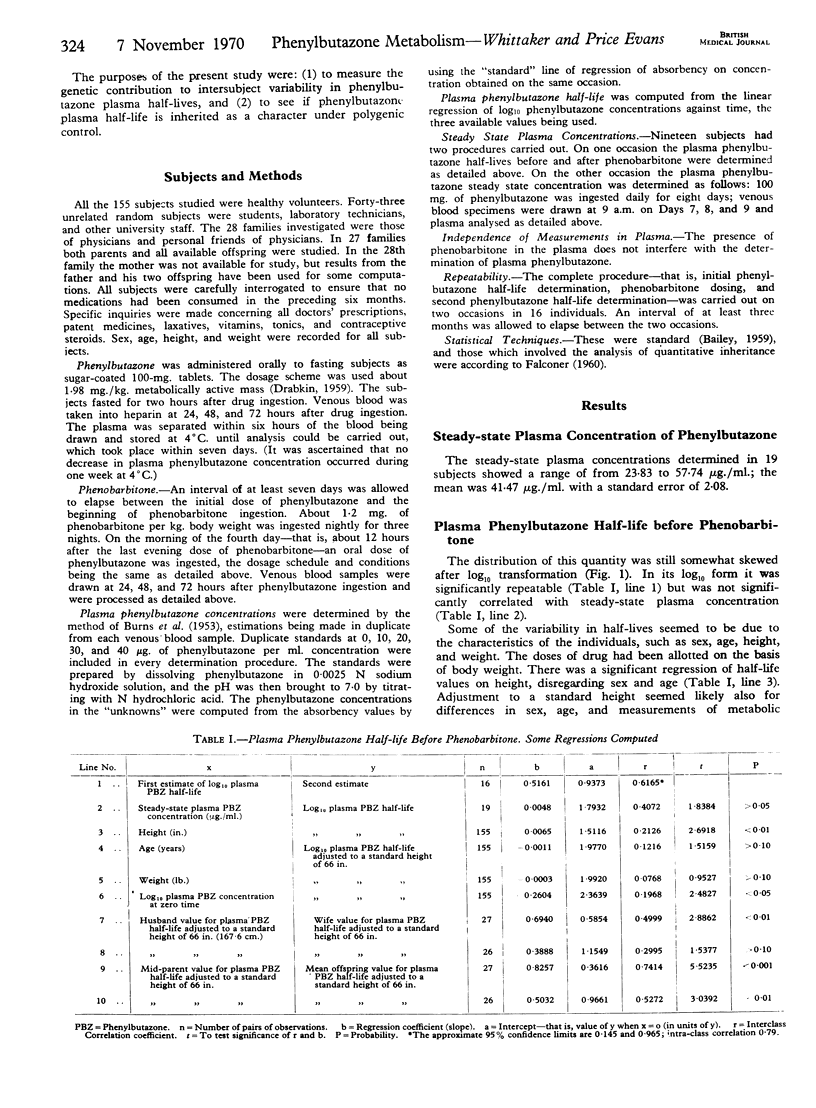
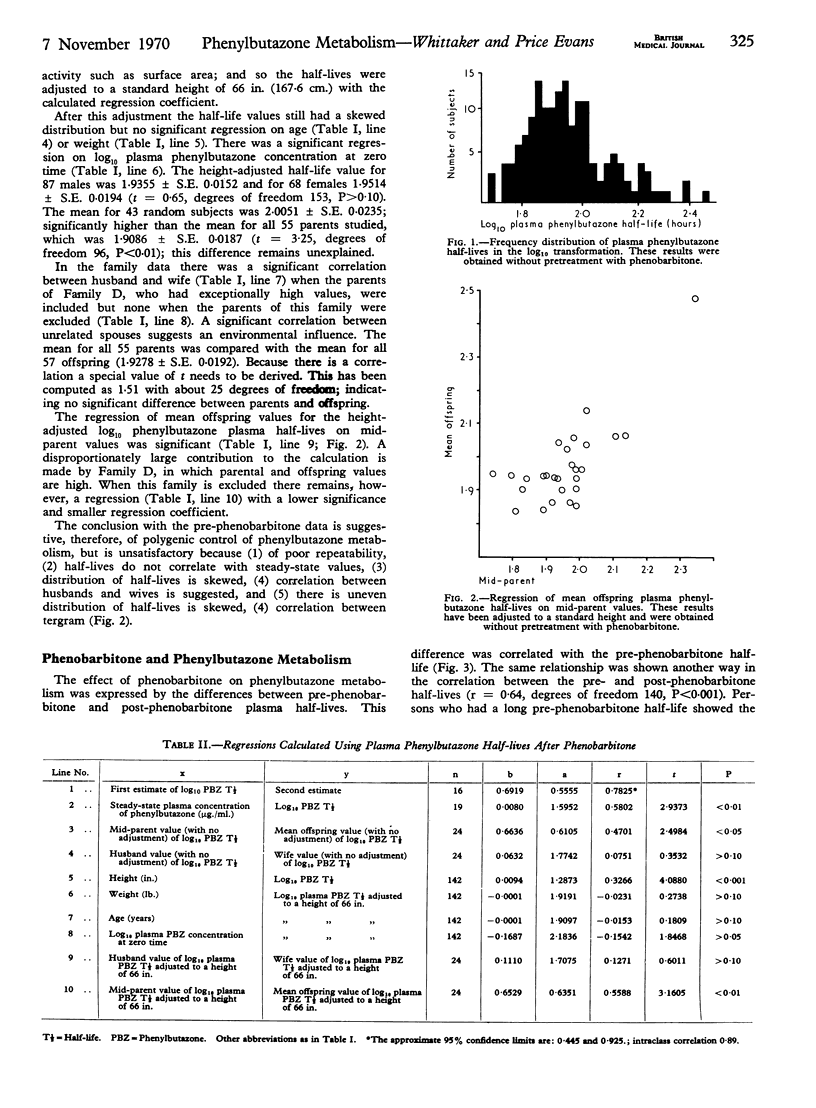
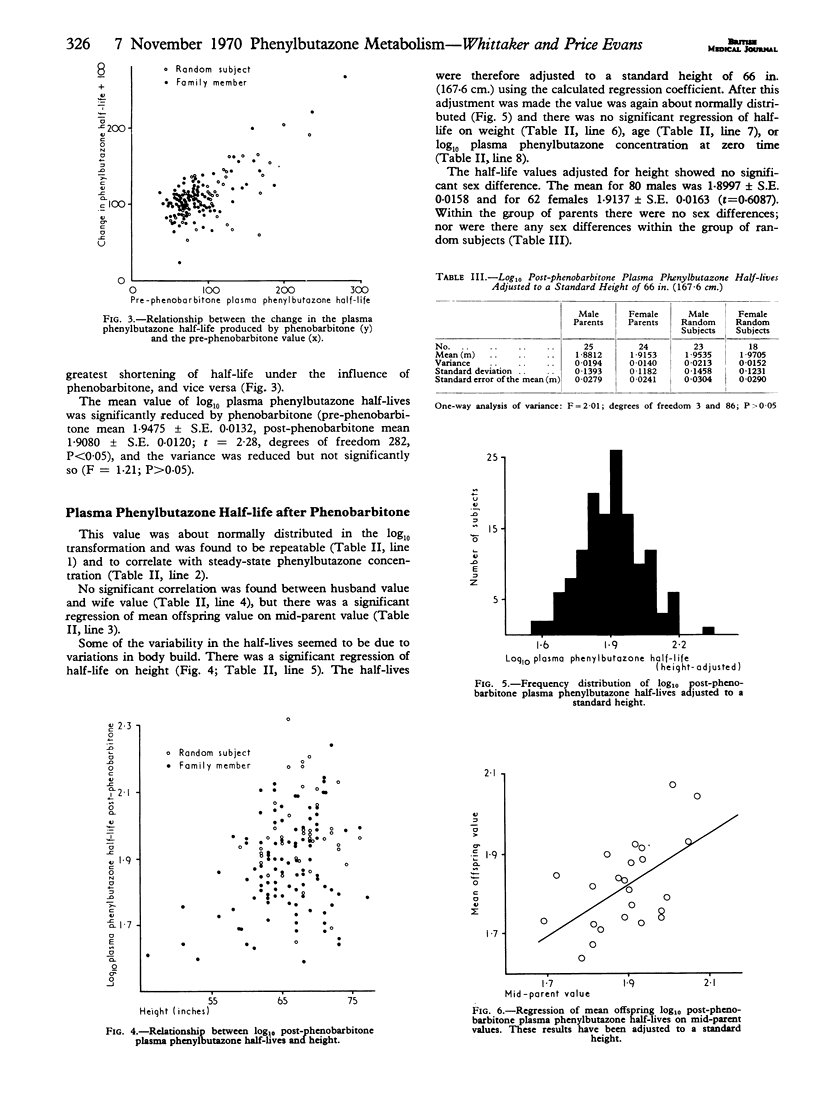
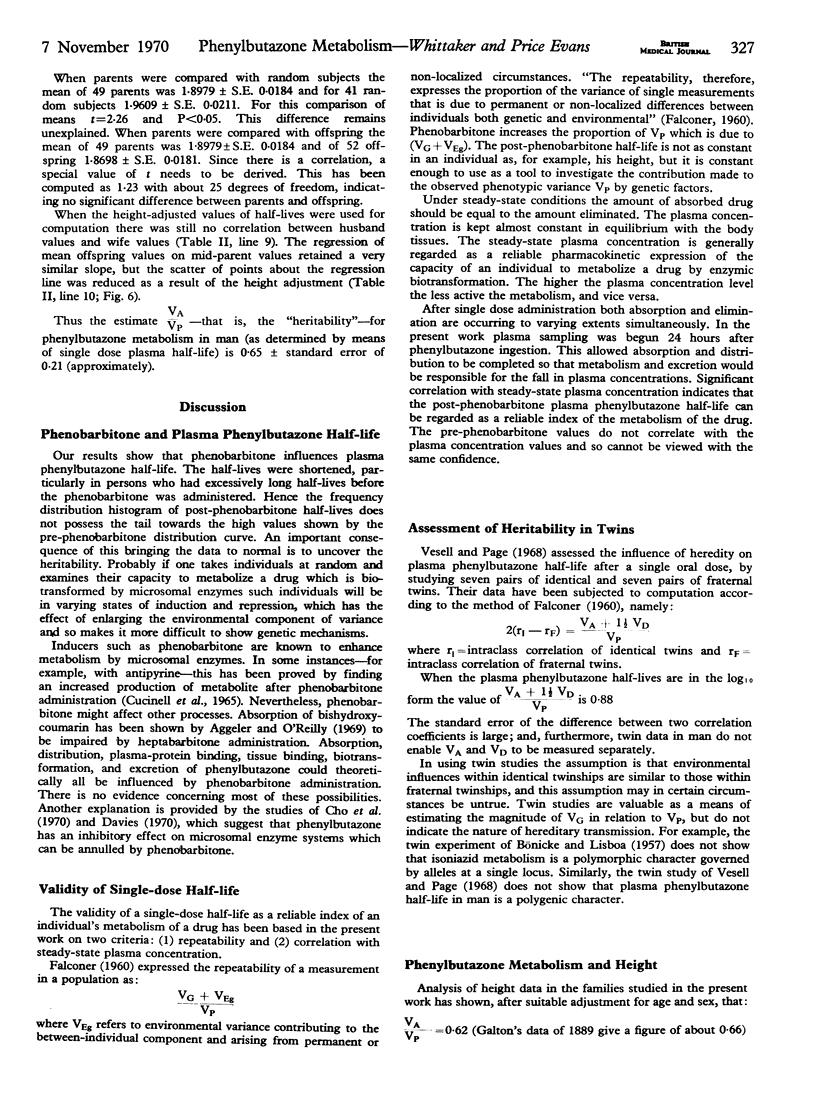
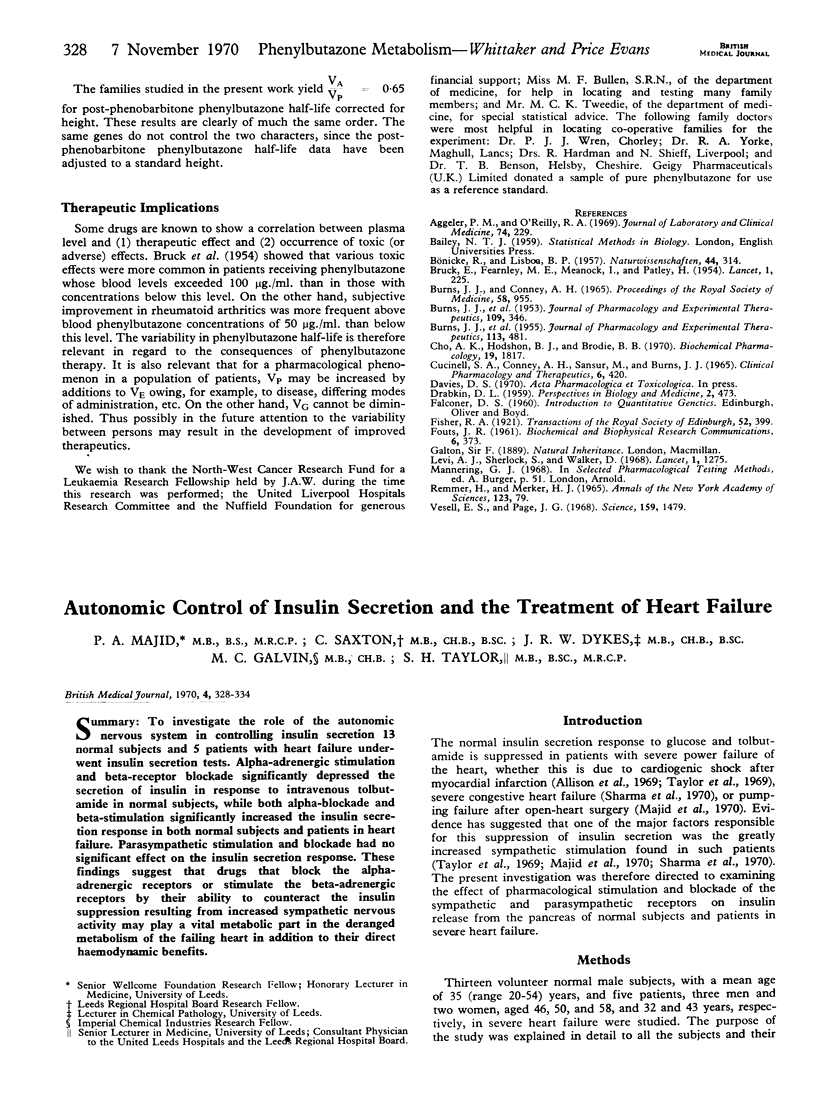
Selected References
These references are in PubMed. This may not be the complete list of references from this article.
- Aggeler P. M., O'Reilly R. A. Effect of heptabarbital on the response to bishydroxycoumarin in man. J Lab Clin Med. 1969 Aug;74(2):229–238. [PubMed] [Google Scholar]
- BRUCK E., FEARNLEY M. E., MEANOCK I., PATLEY H. Phenylbutazone therapy; relation between the toxic and therapeutic effects and the blood level. Lancet. 1954 Jan 30;266(6805):225–228. doi: 10.1016/s0140-6736(54)90874-0. [DOI] [PubMed] [Google Scholar]
- BURNS J. J., ROSE R. K., CHENKIN T., GOLDMAN A., SCHULERT A., BRODIE B. B. The physiological disposition of phenylbutazone (butazolidin) in man and a method for its estimation in biological material. J Pharmacol Exp Ther. 1953 Nov;109(3):346–357. [PubMed] [Google Scholar]
- BURNS J. J., ROSE R. K., GOODWIN S., REICHENTHAL J., HORNING E. C., BRODIE B. B. The metabolic fate of phenylbutazone (butazolidin) in man. J Pharmacol Exp Ther. 1955 Apr;113(4):481–489. [PubMed] [Google Scholar]
- Burns J. J., Conney A. H. Enzyme stimulation and inhibition in the metabolism of drugs. Proc R Soc Med. 1965 Nov;58(11 Pt 2):955–960. [PMC free article] [PubMed] [Google Scholar]
- CUCINELL S. A., CONNEY A. H., SANSUR M., BURNS J. J. DRUG INTERACTIONS IN MAN. I. LOWERING EFFECT OF PHENOBARBITAL ON PLASMA LEVELS OF BISHYDROXYCOUMARIN (DICUMAROL) AND DIPHENYLHYDANTOIN (DILANTIN). Clin Pharmacol Ther. 1965 Jul-Aug;6:420–429. doi: 10.1002/cpt196564420. [DOI] [PubMed] [Google Scholar]
- Cho A. K., Hodshon B. J., Brodie B. B. Effects of phenylbutazone on liver microsomal demethylase. Biochem Pharmacol. 1970 May;19(5):1817–1823. doi: 10.1016/0006-2952(70)90175-9. [DOI] [PubMed] [Google Scholar]
- DRABKIN D. L. Imperfection: biochemical phobias and metabolic ambivalence. Perspect Biol Med. 1959;2(4):473–517. doi: 10.1353/pbm.1959.0037. [DOI] [PubMed] [Google Scholar]
- FOUTS J. R. The metabolism of drugs by subfractions of hepatic microsomes. Biochem Biophys Res Commun. 1961 Dec 20;6:373–378. doi: 10.1016/0006-291x(61)90148-6. [DOI] [PubMed] [Google Scholar]
- Levi A. J., Sherlock S., Walker D. Phenylbutazone and isoniazid metabolism in patients with liver disease in relation to previous drug therapy. Lancet. 1968 Jun 15;1(7555):1275–1279. doi: 10.1016/s0140-6736(68)92292-7. [DOI] [PubMed] [Google Scholar]
- REMMER H., MERKER H. J. EFFECT OF DRUGS ON THE FORMATION OF SMOOTH ENDOPLASMIC RETICULUM AND DRUG-METABOLIZING ENZYMES. Ann N Y Acad Sci. 1965 Mar 12;123:79–97. doi: 10.1111/j.1749-6632.1965.tb12247.x. [DOI] [PubMed] [Google Scholar]
- Vesell E. S., Page J. G. Genetic control of drug levels in man: phenylbutazone. Science. 1968 Mar 29;159(3822):1479–1480. doi: 10.1126/science.159.3822.1479. [DOI] [PubMed] [Google Scholar]


